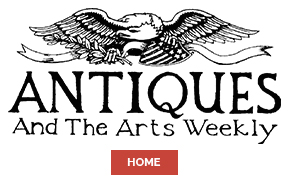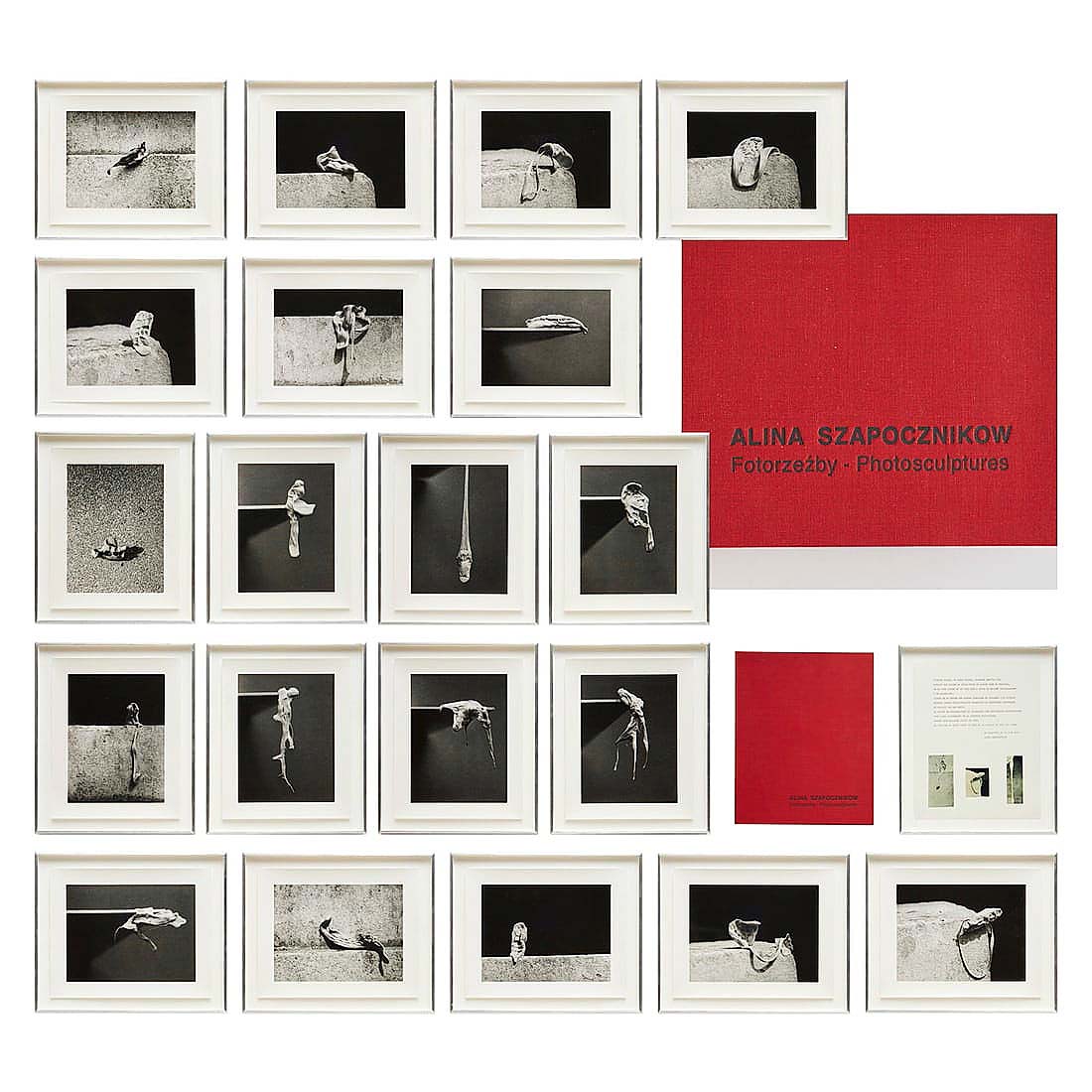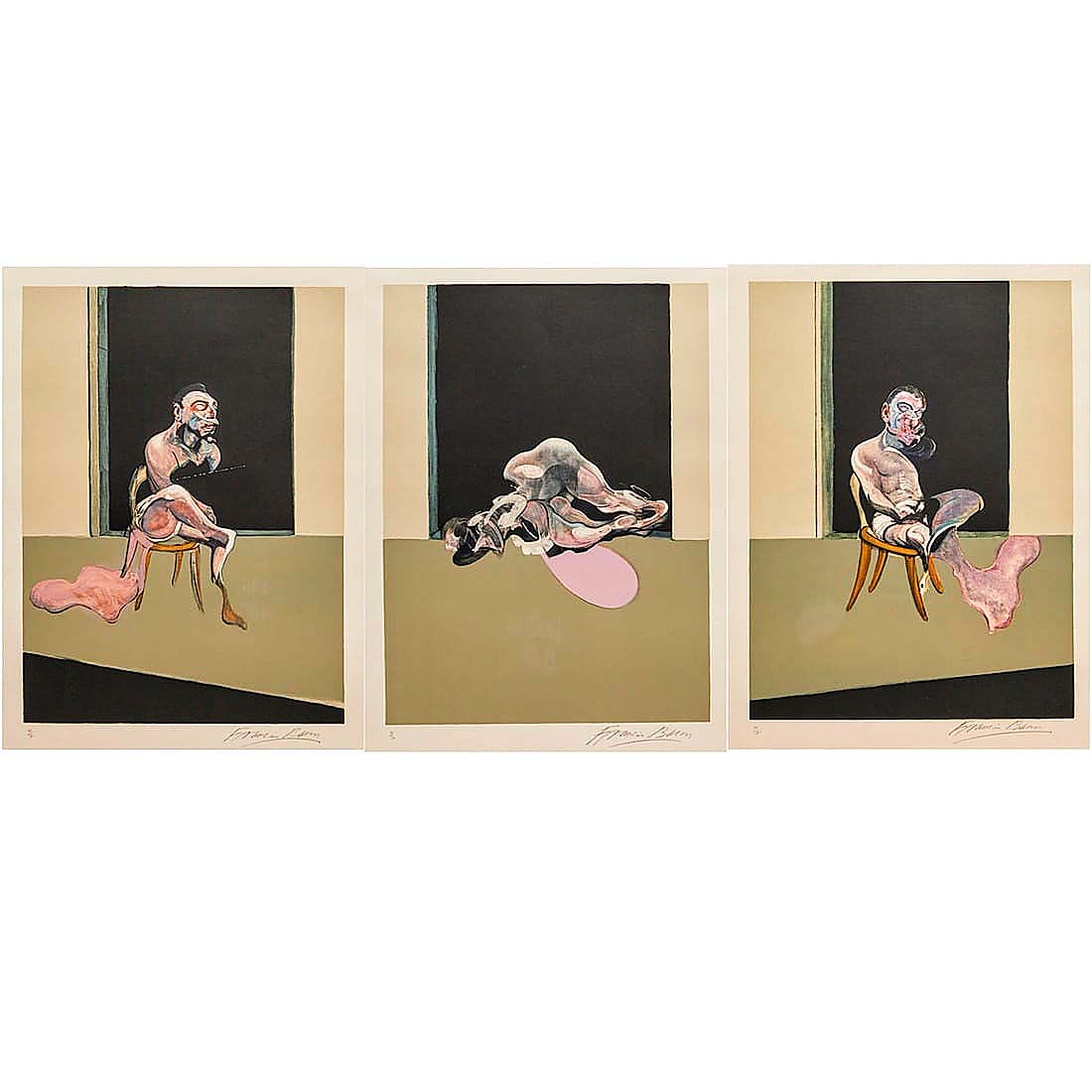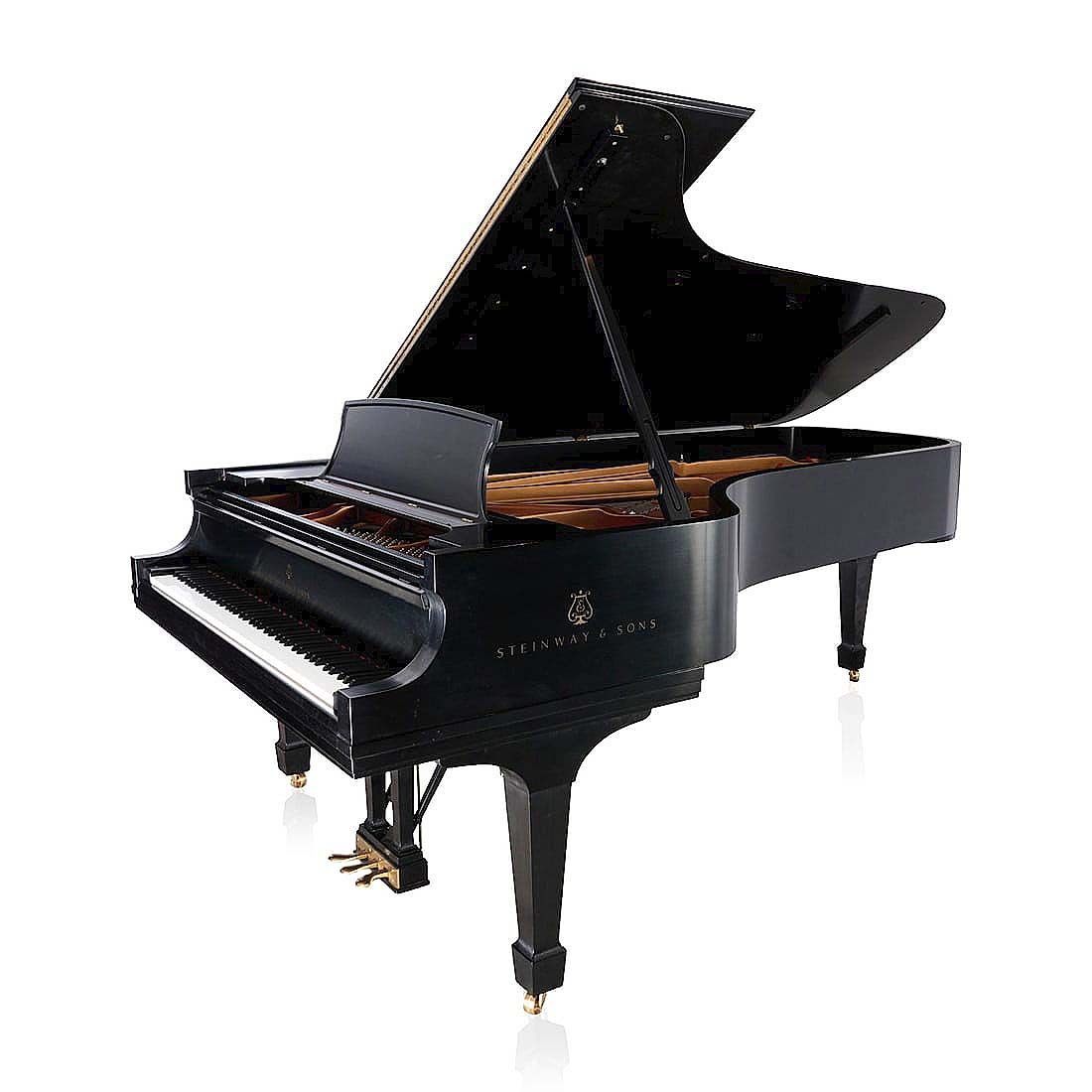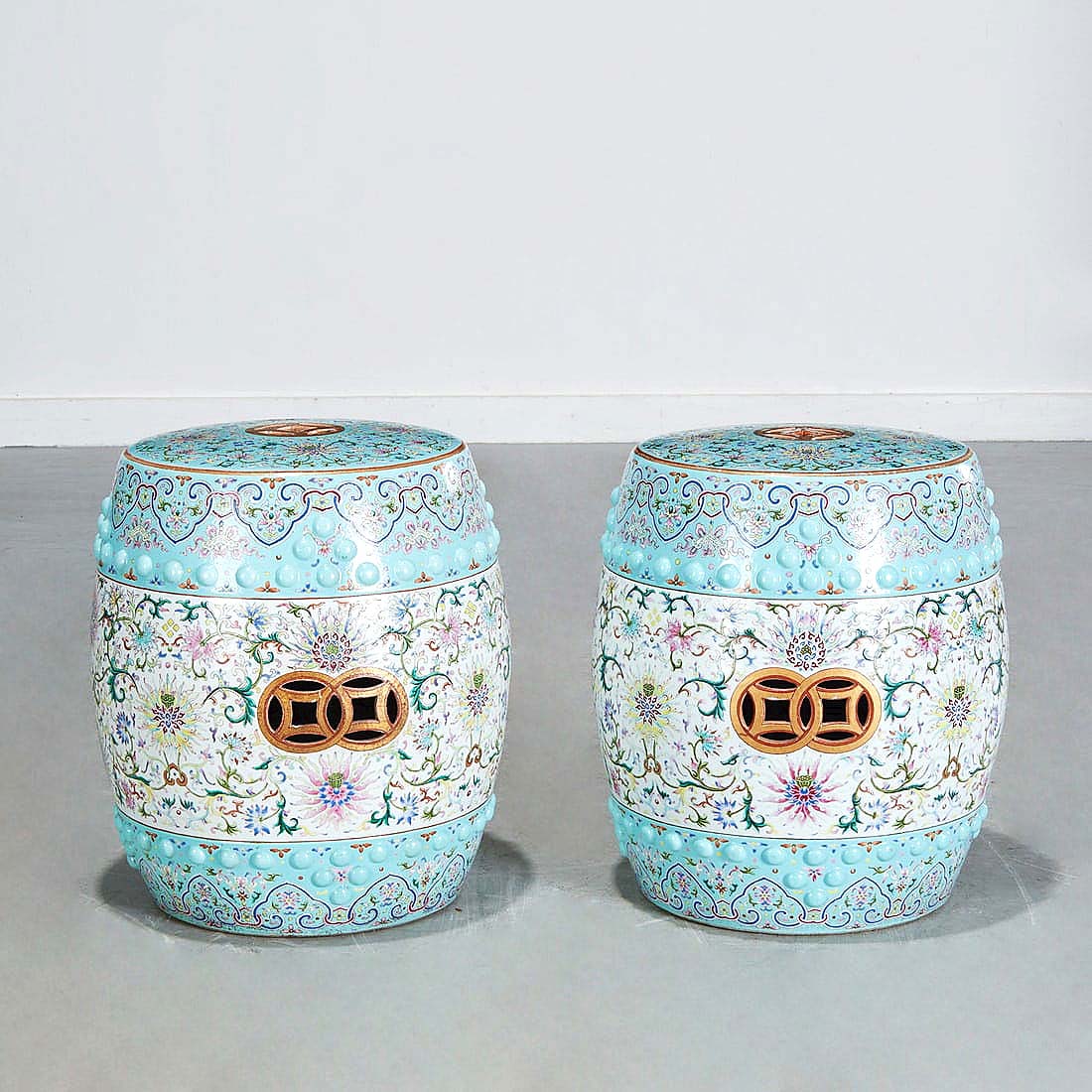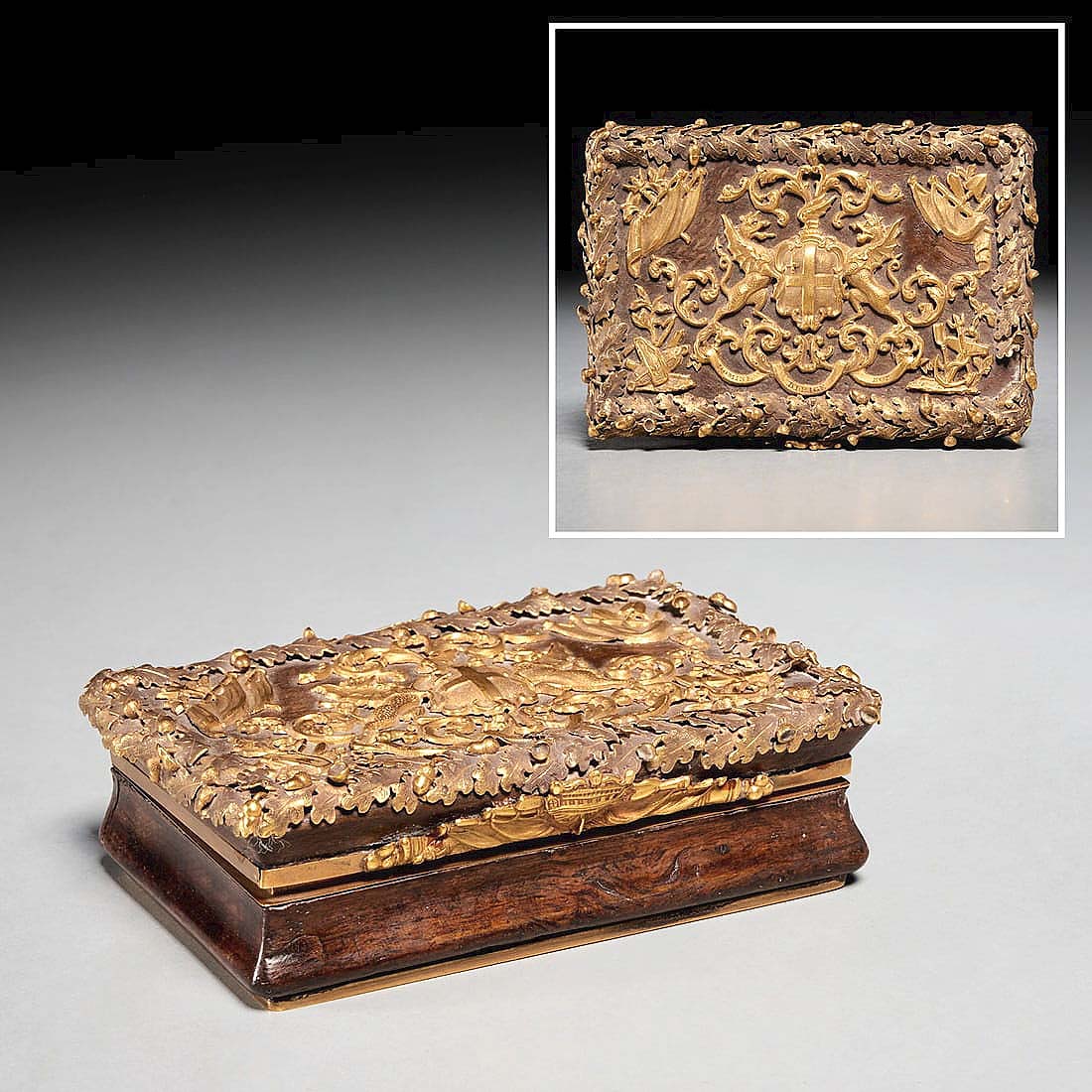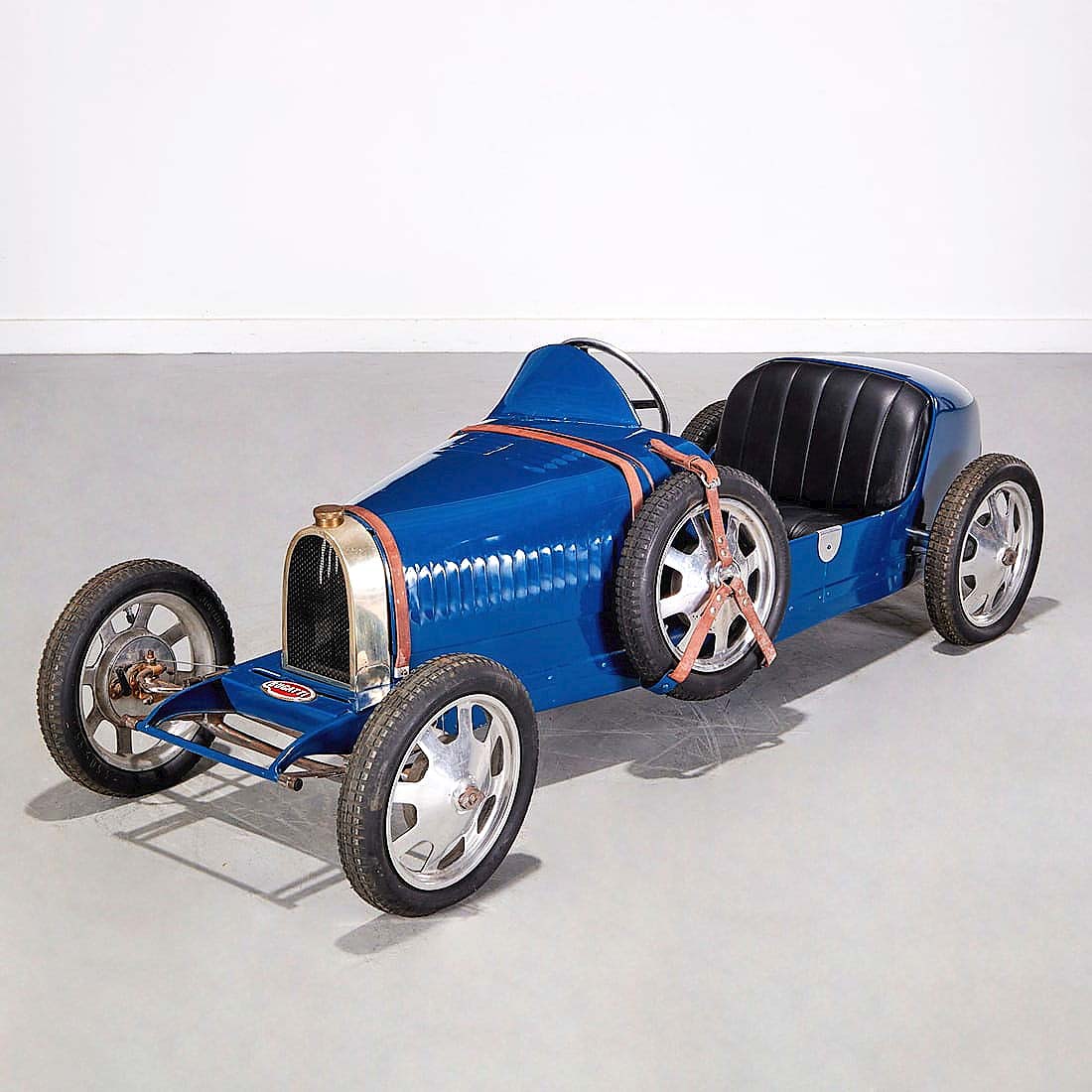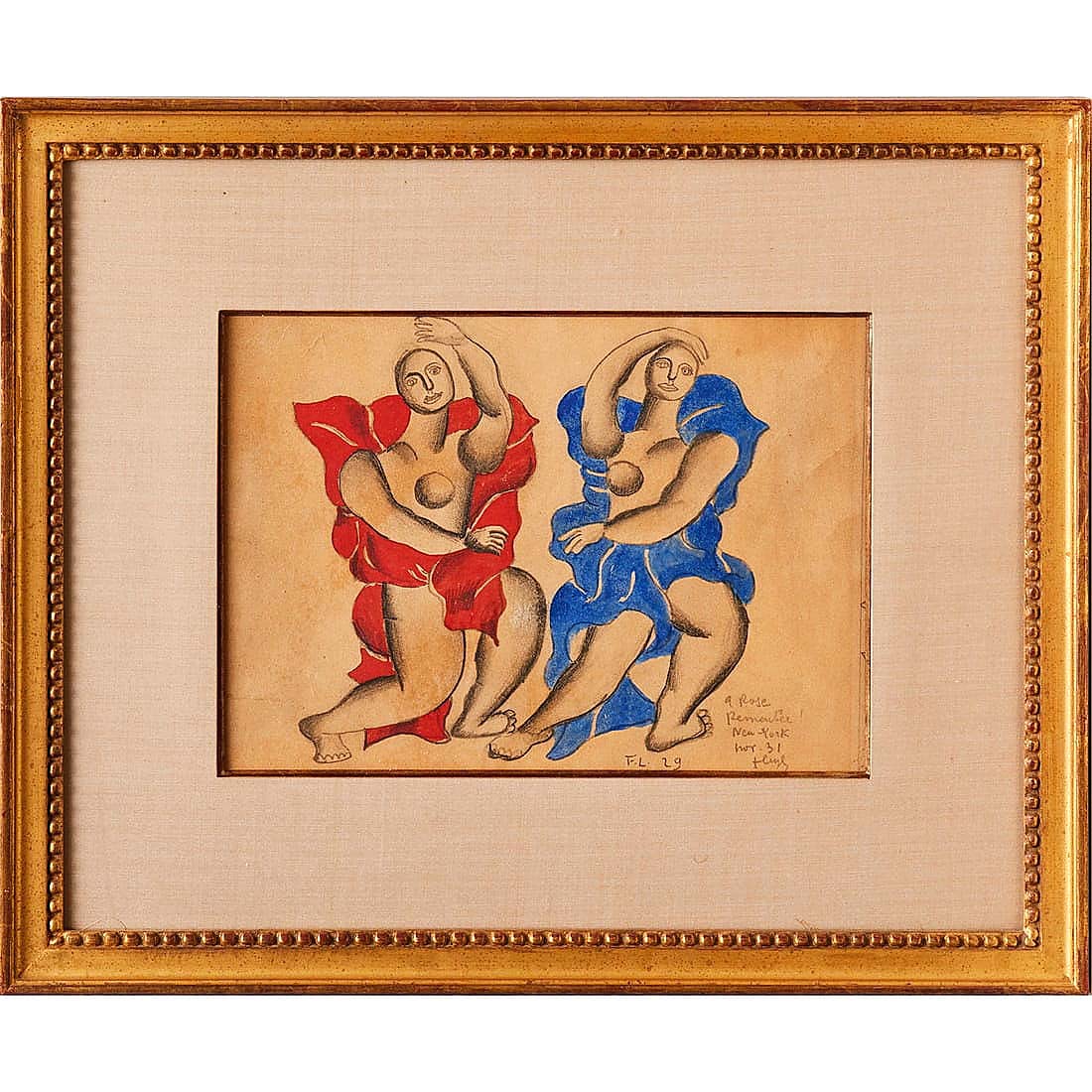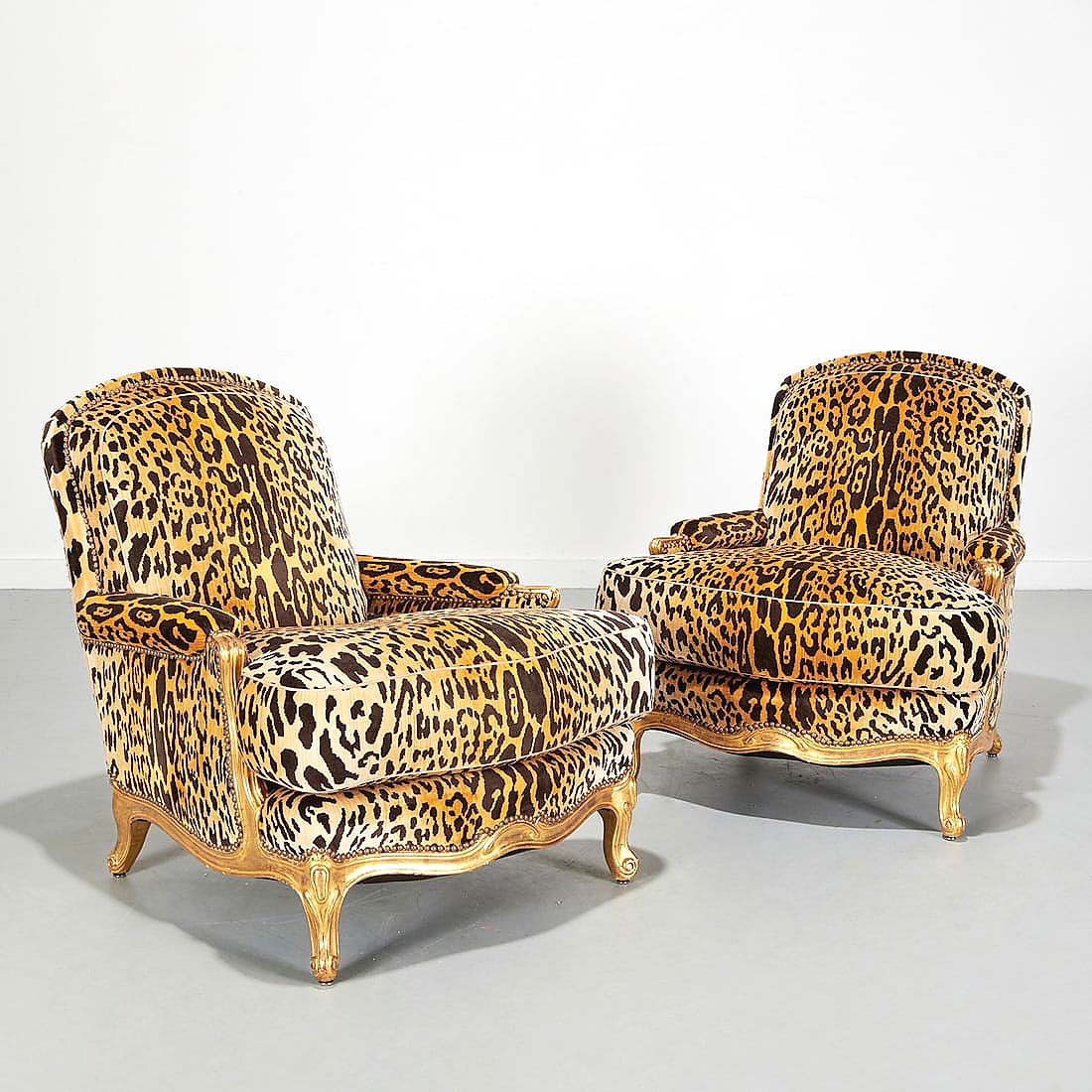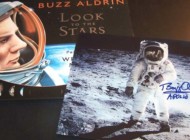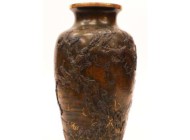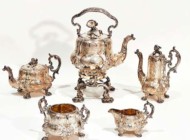
The highest price of day three, and the sale in its entirety, went to “Observatory Time – The Lovers” by Man Ray (Emmanuel Radnitzky) (American, 1890-1976), 1934, pen and ink, 14¼ by 18¼ inches framed, which earned $121,875 ($8/12,000).
Review by Kiersten Busch
BOONTON, N.J. — Millea Bros closed out its 2025 season with its three-day Select Auction, featuring more than 900 lots of art, antiquities and other curious finds. Owner Mark Millea shared, “The sale performed 36 percent over our high presale estimate, bringing $3,086,500. The sell-through rate was 94 percent.”
Millea continued, “The sale exceeded our expectations from start to finish and carried a palpable energy throughout — it smoked. That momentum was driven by genuine enthusiasm for what was on offer. I was initially a bit wary of holding the auction closer to the holidays, but that concern quickly disappeared. We saw more presale interest than usual, with especially strong bidding for photography and quality antique silver.” He was also able to disclose that 15 percent of lots sold to international buyers.
The top lot on the first day had provenance to an important Boston art collection and “received a lot of attention during preview and weeks leading up to the sale,” according to Millea. “Fotorzezby (Photosculptures)” by Alina Szapocznikow was a 20-piece black-and-white photograph series that earned more than 13 times its $5,000 high estimate, heading to a European dealer for $65,625. this example was edition two of 12 and came with its original archival box.
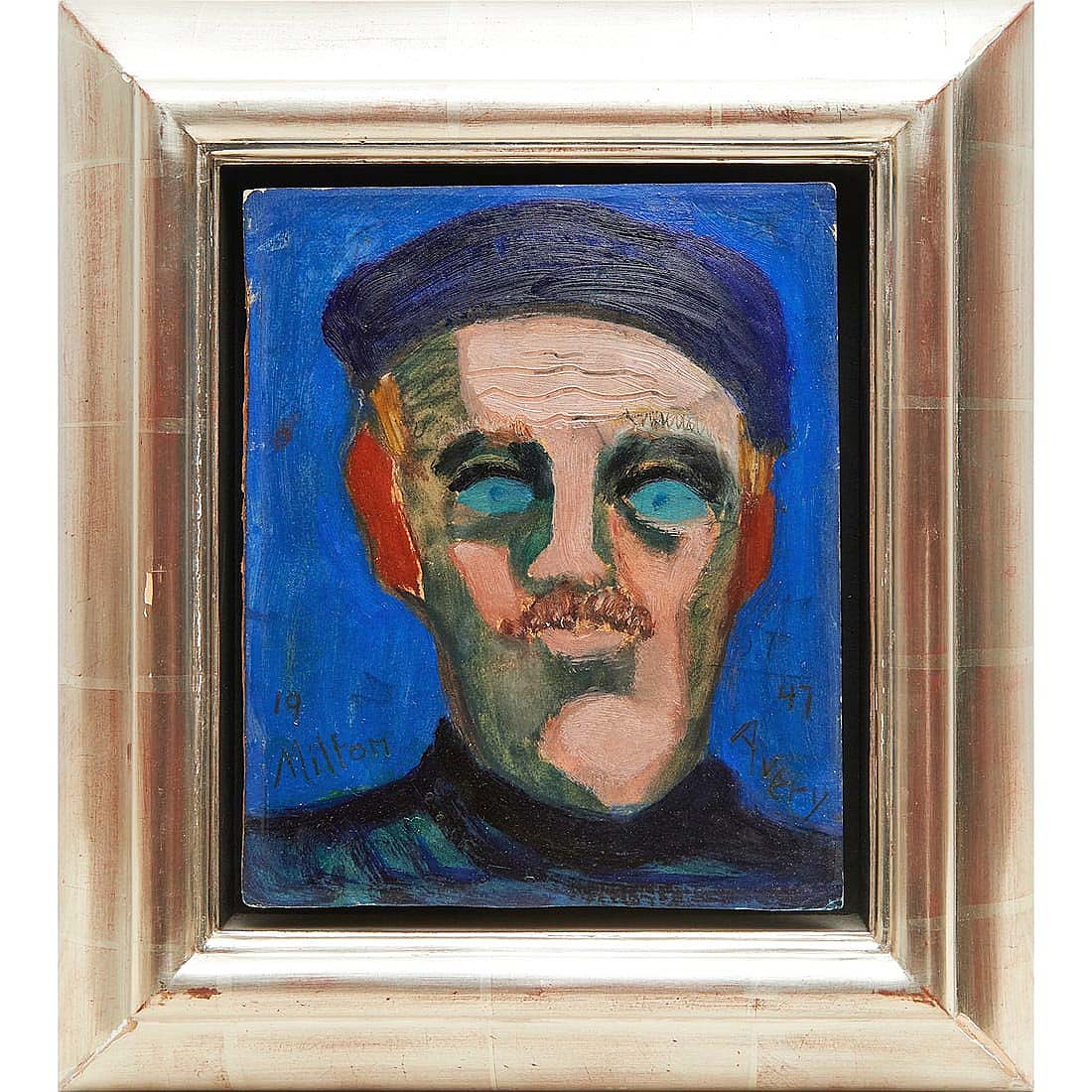
“Self-Portrait” by Milton Avery (American, 1885-1965), 1947, oil on panel, 14 by 12½ inches framed, was bid to $42,500 ($10/15,000).
An oil on panel “Self-Portrait” by American artist Milton Avery achieved the second highest price — $42,500. The 1947 work was signed and inscribed on its reverse and had provenance to the estate of the artist, a private California collection and then the consignor: a Shelter Island, N.Y., private collection, where it had resided since 2003. “Many preview visitors came to our gallery specifically to view this work in person,” said Millea. “We received inquiries from dealers and advisors on behalf of their clients. This lot was ultimately sold to a New York dealer.”
Francis Bacon was represented by two works on the first day, led by “Triptych August 1972,” a lithograph triptych on Arches paper done in 1979, which earned $28,750. The three sheets were numbered “70/180” and were published by Galerie Lelong, Paris. They also had provenance to a Park Avenue, New York City, private collection. The second, “Three Studies for a Self-Portrait,” done in 1981, came from the same private collection and made $20,000.
Additionally, Millea noted the success of Hans Haacke’s 1976 “The Chase Advantage,” a silkscreen on plexiglass: “This work had active and strong bidding since the first day the catalog was posted. It was sold [for $21,250] to an American arts patron.” He also highlighted a handmade bolero-style vest with a butterfly pattern made by Alice B. Toklas (American, 1877-1967) for Gertrude Stein. “We primarily marketed the Stein waistcoat to institutions, but it was ultimately purchased by a private buyer [for $15,000],” he explained.

“The Chase Advantage” by Hans Haacke (German, b 1936), 1976, silkscreen on plexiglass, one of an edition of six, 48 inches square, cashed out for $21,250 ($1/1,500).
Turning to the three-dimensional, “Taburett No. 1,” a cast iron bench attributed to Folke Bensow and designed in 1925, made $25,000 against a $2/3,000 estimate. The bench’s diamond-pierced seat was flanked by two fluted handles and had scrolling floral decorations in relief on its sides. Other three-dimensional works that did well included Richard Artschwager’s (American, 1923-2013) 1994 mixed media sculpture “Splatter Chair IV” ($20,000) and “Skull,” a 2001 gilt bronze sculpture by Sherrie Levine (American, b 1947) ($20,000).
A circa 1996 Steinway & Sons NY Model D concert grand piano with an ebony satin finish led day two of the sale at $55,000. “We allowed private viewings and inspections of the Steinway outside of preview hours, and many bidders consulted their own or local technicians to inspect this piano prior to the sale. Bidders included professional pianists, private buyers and dealers. The piano was sold to a New York piano dealer,” explained Millea. A Yamaha Conservatory baby grand piano, model C1, also sold, played to the tune of $8,750.
Approximately 70 lots of Chinese wares were offered, with a pair of Chinese famille rose garden seats earning the highest price at $40,000. The polychrome enameled porcelain stools were made in the late Qing dynasty/Republic period (Nineteenth and Twentieth Century) and were decorated with foliate and floral scrolls. Millea added, “These garden seats had a lot of attention in the weeks leading up to the sale, specifically from Chinese buyers and dealers, and were ultimately purchased by a Chinese buyer.”
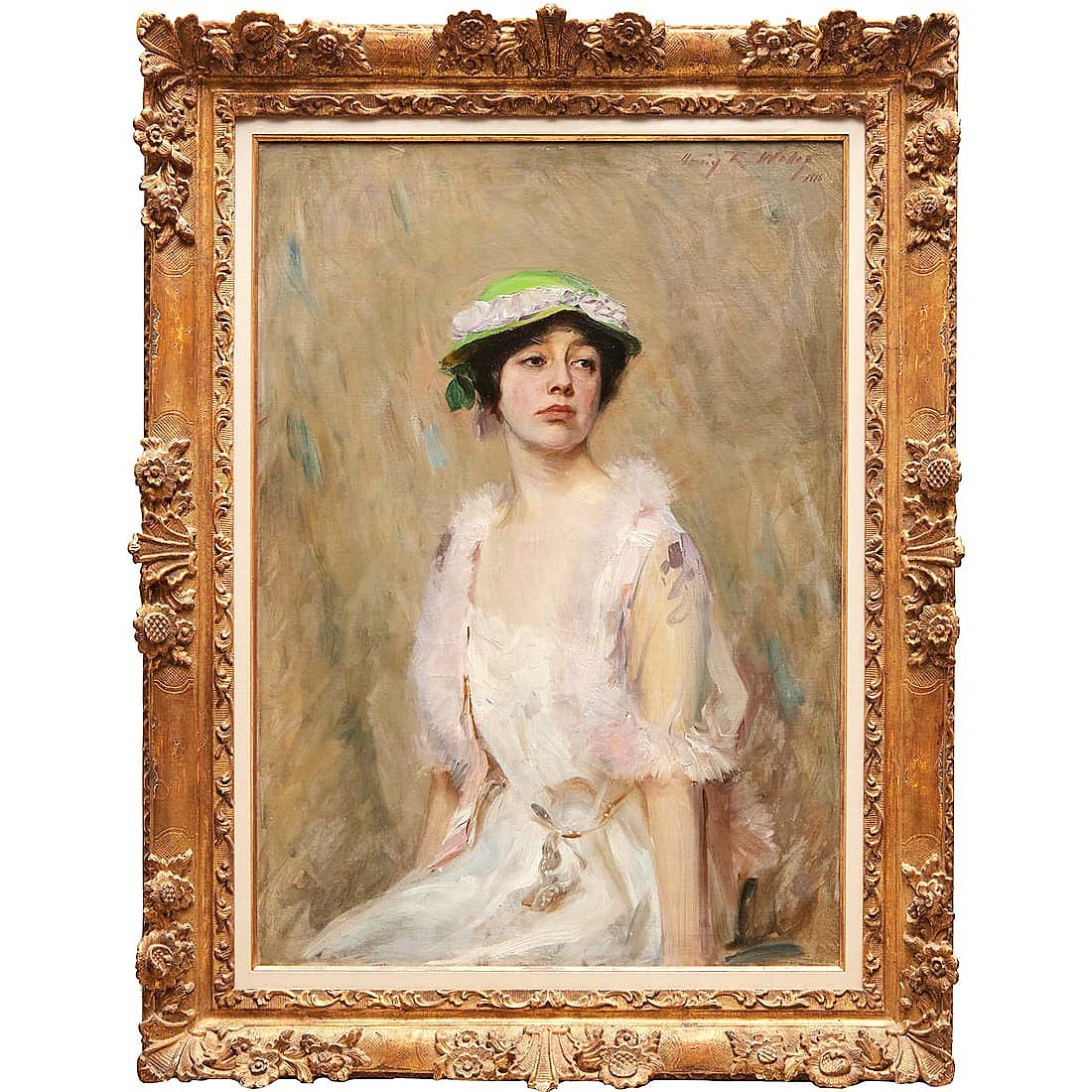
“The Little Green Hat” by Irving Ramsey Wiles (American, 1861-1948), 1916, oil on canvas, 48 by 37 inches framed, eclipsed its $8/12,000 estimate to make $31,250.
Fine art on day two was led by “The Little Green Hat,” a 1916 oil on canvas by Irving Ramsey Wiles, which had provenance to a private collection in Greenwich, Conn., and was previously exhibited at the Pennsylvania Academy of Fine Arts in 1922 and the National Academy of Design in 1919. It far surpassed its $8/12,000 estimate, achieving $31,250.
Another portrait, albeit one a bit older than Wiles’, also achieved one of the highest prices of the day. A Roman Egyptian Fayum mummy portrait of a man, dated between the late First Century BCE and the Third Century CE, attracted bidder attention, pushing the ancient work to $22,500 ($5/7,000). The tempera on panel painting was displayed in a plexiglass case and was consigned from the New York City estate of an Italian scholar and collector.
“Although we knew this box to be special based on its quality, historical significance and provenance, it seemed to fly under the radar during the weeks leading up to the sale,” said Millea of an English 18K gold-mounted box awarded around 1833 to Captain John Ross of the Royal Navy, for “Freedom of the City of London,” which led the decorative arts at $25,000. Bearing a maker’s mark for the London-based Alexander J. Strachan, the box’s lid was mounted with the London coat of arms and foliage designs and its interior was fully hallmarked.
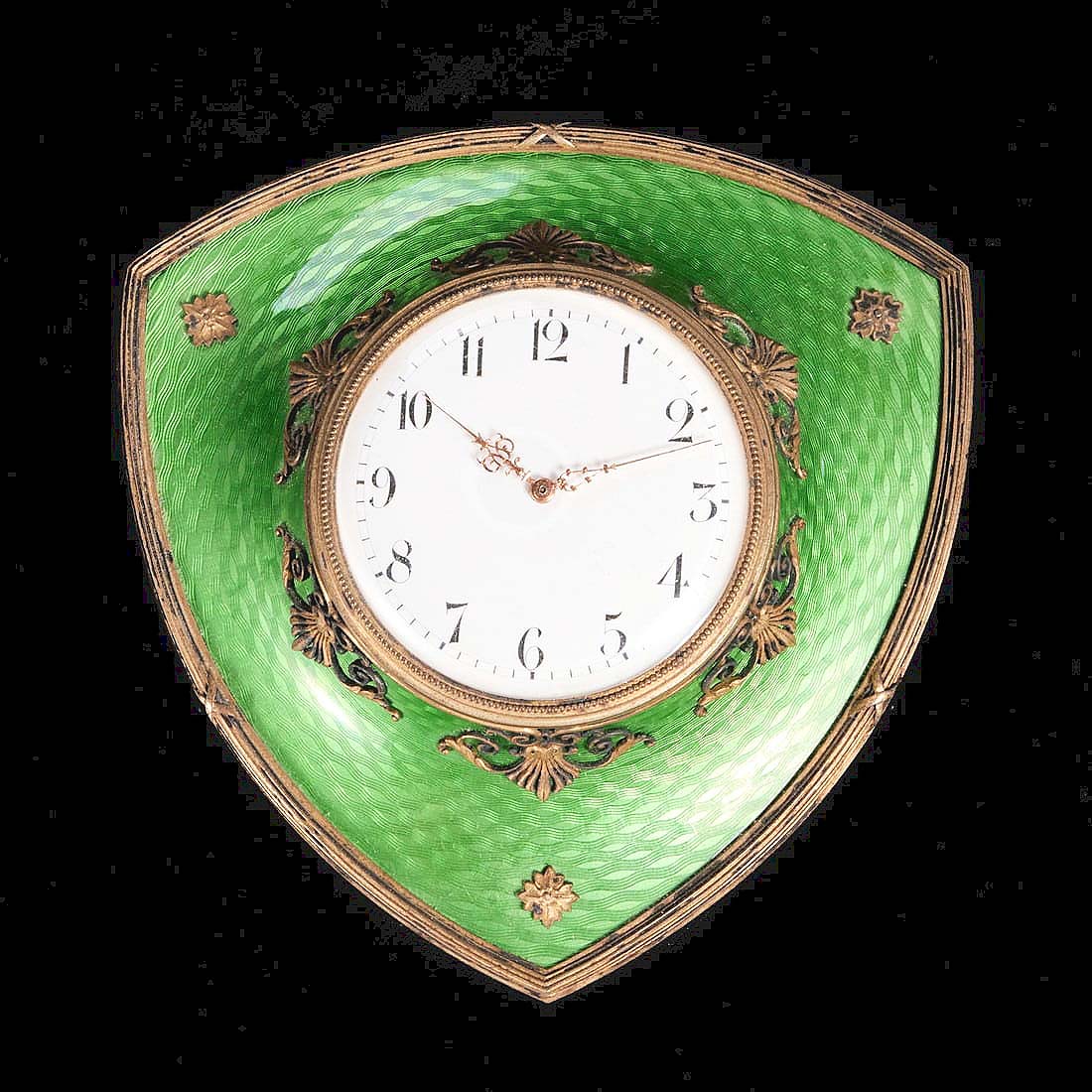
Ticking to $50,000 was this late Nineteenth/early Twentieth Century silver and enamel desk clock, 4¼ by 4 inches, which was attributed to Fabergé ($1/1,500).
Several silver lots attracted bidder attention, including a George III silver soup tureen and stand with a maker’s mark “PS” ($20,000), a pair of Paul Storr George III sterling silver meat dishes ($20,000), a Dominick & Haff sterling coffee service and tray ($16,250) and a 28½-tall-high Elkington & Company sterling silver epergne made circa 1862 in Birmingham ($16,250).
The highest price of the sale came on the last day, from a pen and ink drawing by Man Ray (Emmanuel Radnitzky) that achieved $121,875. Titled “Observatory Time – The Lovers,” the 1934 work was signed and dated to the lower right and had several labels on its reverse, including one for an exhibition at The Wadsworth Atheneum (Hartford, Conn.) and another for the collection of Naomi Savage (New Jersey). “While Man Ray is most well-known for his photography, this drawing is important to his oeuvre because it is related to the monumental painting ‘À l’heure de l’observatoire — les amoureux,’ which is now in a private collection,” shared Millea.
Two additional works of art earned top prices on day three, including “Deux Femmes Drapees,” a 1929 graphite and gouache work by Fernand Leger that danced to $36,250, and David Burliuk’s 1948 oil on canvas “Flowers in a Room with Apples and Newspaper,” which sat pretty for $20,000.
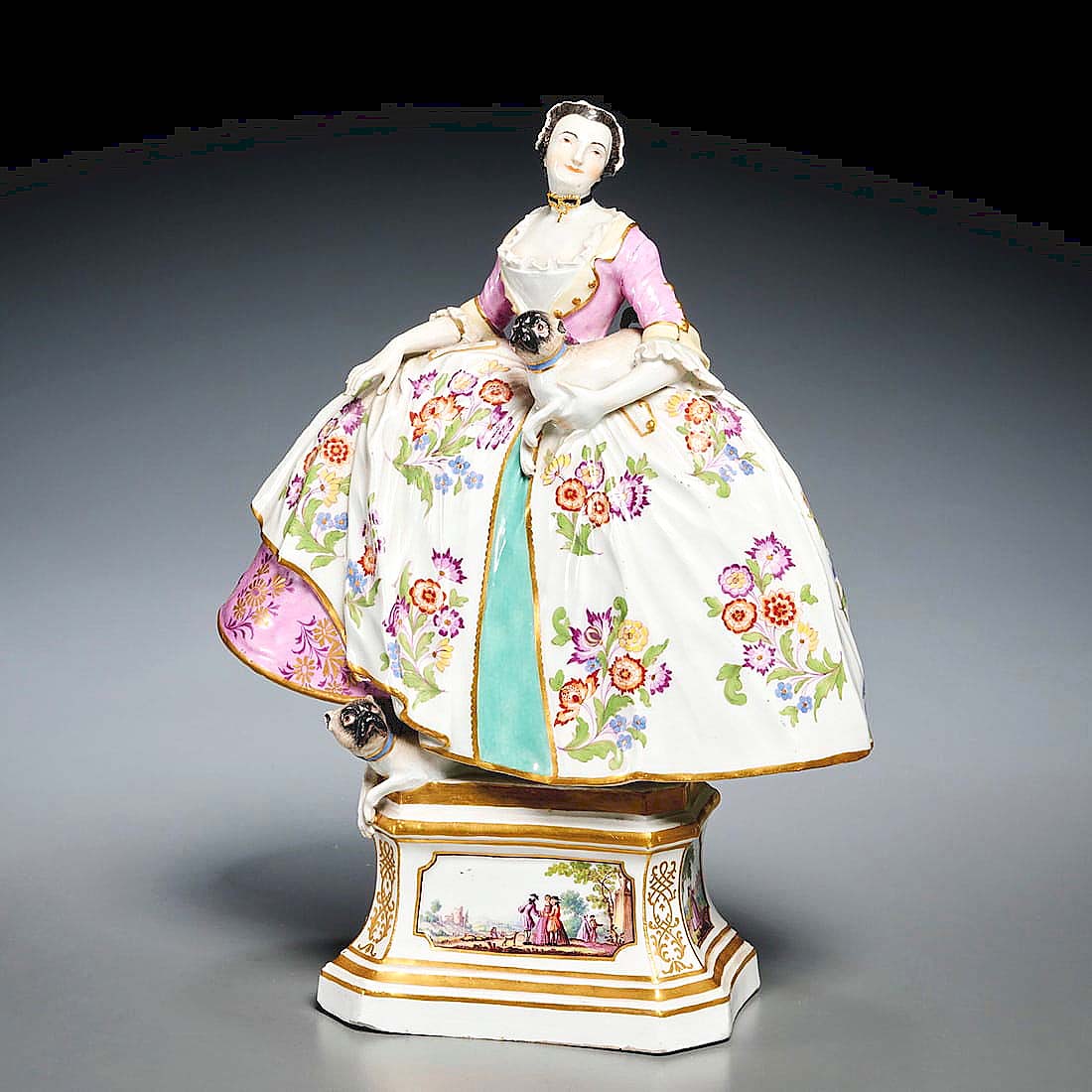
This Eighteenth Century Continental porcelain figure of a woman with pug, 11¼ inches tall, was most likely made by Meissen and curtseyed for $32,500 against a conservative $500/700 estimate.
Porcelain figures were popular as well, with an Eighteenth Century Continental woman with pug, most likely Meissen, selling to a German porcelain dealer for $32,500. Titled “Lady of the Mopsorden,” the 11¼-inch-tall example had provenance to a private New York City collection as well as a 1977 Christie’s London sale. Following directly behind the porcelain lady at $28,750 was a Meissen Freemason figure, also with a pug, modelled by J.J. Kandler in 1743 and crafted sometime in the Eighteenth Century. Millea shared that these two lots, “as well as all Meissen and continental porcelain, received a lot of attention from European dealers specifically.”
Furniture was led by a pair of Louis XV-style Scalamandre Leopardo chairs, which had provenance to a private collection on Fifth Avenue in New York City. Made in the Twentieth Century, they had carved giltwood bergères, leopard pattern silk velvet and cabriole legs. Far surpassing its $1,2/1,800 estimate, the pair roared to $25,000.
An unusual appearance on day three took the form of a 1930 Ettore Bugatti “Baby 52” electric car, which had an enameled aluminum shell and measured just 25½ inches long. It had extensive publication history and provenance, including two Christie’s, New York, sales. It sold at Millea Bros for $62,500. “We don’t often sell classic cars in our auctions. We had an extensive marketing plan for this Bugatti, including contacting official Bugatti collectors’ clubs across the world and classic car museums in the United States and Europe. This lot was sold to a well-known European car dealer who wishes to restore it,” added Millea.
To conclude, Millea shared, “Our next sale will be one of our ‘ABC’ auctions, an online-only, three-day sale of fresh, modestly valued estate finds.” The date has yet to be announced. Prices quoted include buyer’s premium, as reported by the auction house. For information, 973-377-15000 or www.milleabros.com.
